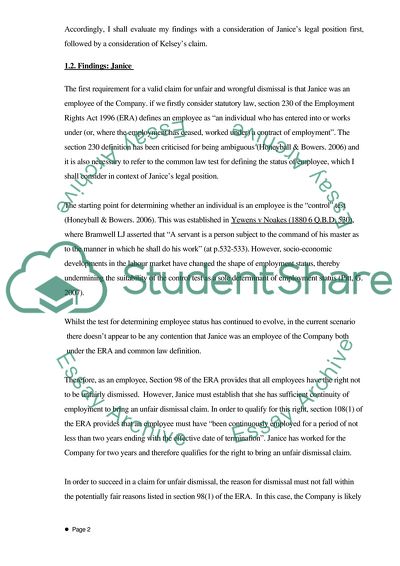Cite this document
(Unfair Dismissal and Wrongful Dismissal Claims Assignment - 2, n.d.)
Unfair Dismissal and Wrongful Dismissal Claims Assignment - 2. Retrieved from https://studentshare.org/human-resources/1729766-employment-law-assignment
Unfair Dismissal and Wrongful Dismissal Claims Assignment - 2. Retrieved from https://studentshare.org/human-resources/1729766-employment-law-assignment
(Unfair Dismissal and Wrongful Dismissal Claims Assignment - 2)
Unfair Dismissal and Wrongful Dismissal Claims Assignment - 2. https://studentshare.org/human-resources/1729766-employment-law-assignment.
Unfair Dismissal and Wrongful Dismissal Claims Assignment - 2. https://studentshare.org/human-resources/1729766-employment-law-assignment.
“Unfair Dismissal and Wrongful Dismissal Claims Assignment - 2”, n.d. https://studentshare.org/human-resources/1729766-employment-law-assignment.


